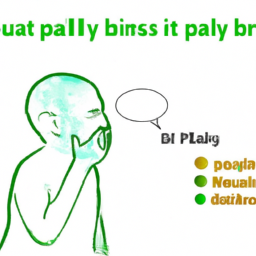Paintball Pain How Much
How Much Does Paintball Hurt
Introduction to Paintball
Paintball is an exciting sport that has become increasingly popular over the last few decades. It is often described as a mixture of tag, hide and seek, and capture the flag. Players use guns called markers that shoot small capsules filled with biodegradable paint. The objective of the game is to eliminate players from the opposing team, or capture the flag in a game of capture the flag. Paintball is often associated with a fun afternoon filled with adventure and excitement, but there is one concern associated with it that often overshadows the enjoyment how much does paintball hurt?
Pain Threshold
The answer to the question how much does paintball hurt depends on the individual's pain threshold. Some individuals may not even feel the impact when hit with a paintball, while others may experience a brief, yet intense, sting. It is important to understand that while paintball does not hurt as badly as injury-causing sports like football or hockey, it can still be a nerve-wracking experience for some.
Safety Equipment
Safety is also a big factor in determining how much a person may feel the impact of a paintball. Players should wear protective gear that is designed specifically for the sport. This may include facemasks, helmets, gloves, and jumpsuits to cover any exposed skin. It is also important to make sure that the gear fits properly, as ill-fitting protective clothing can cause the paintball to hit with more intensity.
Distance
The distance from which a paintball is fired also impacts how much it may hurt. Paintballs typically travel at a speed of around 300 feet per second, but the impact is significantly diminished from any distance over about 20 feet. This means that a paintball fired from a much closer distance will be more likely to cause a sharper sting than one fired from further away.
Location
Where the paintball is located on the body is also important in determining how much it may hurt. Generally speaking, softer parts of the body like the arms or legs are more likely to cause less pain than harder areas such as the face, chest, or back.
Size of Paintball
The size of the paintball is also a factor in how much it can hurt. Larger paintballs contain more paint, which adds weight and increases the impact of the paintball. In contrast, smaller paintballs are lighter and cause less pain when they hit the body.
Velocity of Paintball
The velocity of the paintball has a big impact on the degree of pain it causes. The faster the paintball is traveling, the more pain it will cause on impact. Paintballs shot at a lower velocity will cause less pain, but may still leave a bruise.
Paint Quality
The quality of the paint used in the gun influences how much it can hurt when it hits. Poor quality paint can cause more pain as the impact is harder, whereas good quality paint is usually softer on impact.
In Summary
How much does paintball hurt? The answer to this question varies from individual to individual and is contingent on many factors. The most important of these factors are the individual's pain threshold, the safety equipment used, the distance of the shot, the location of the hit, the size and velocity of the paintball, and the quality of the paint. By understanding these factors and taking the necessary safety precautions, players can enjoy a game of paintball without worrying about the intensity of the stings they receive.

Previous Page
Next Page